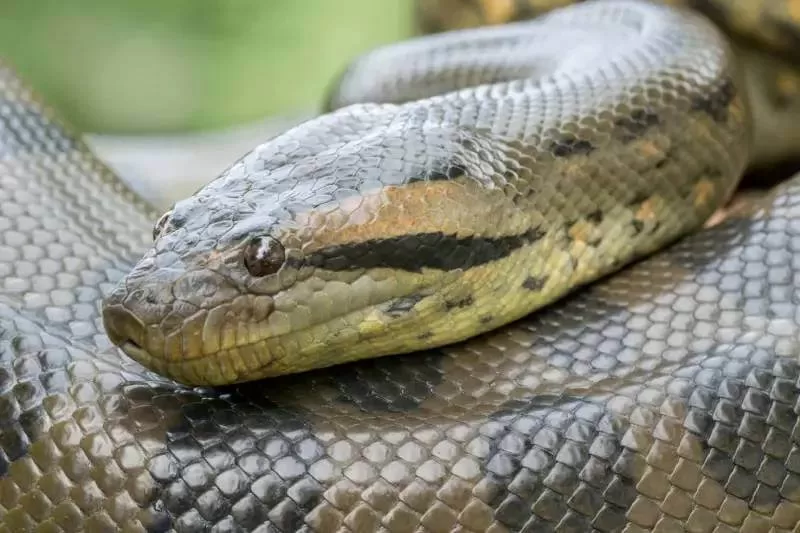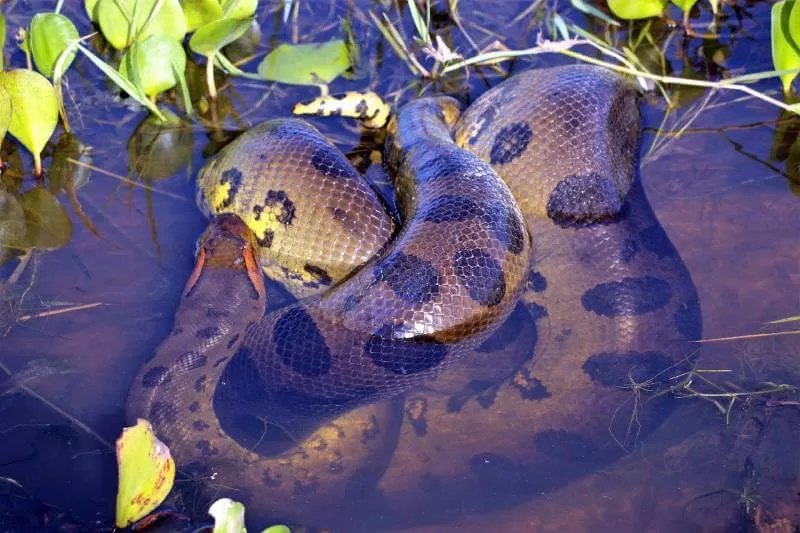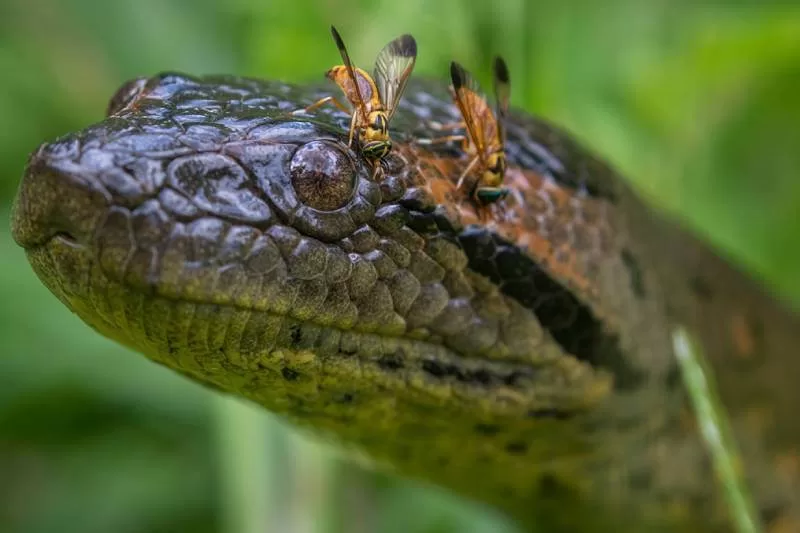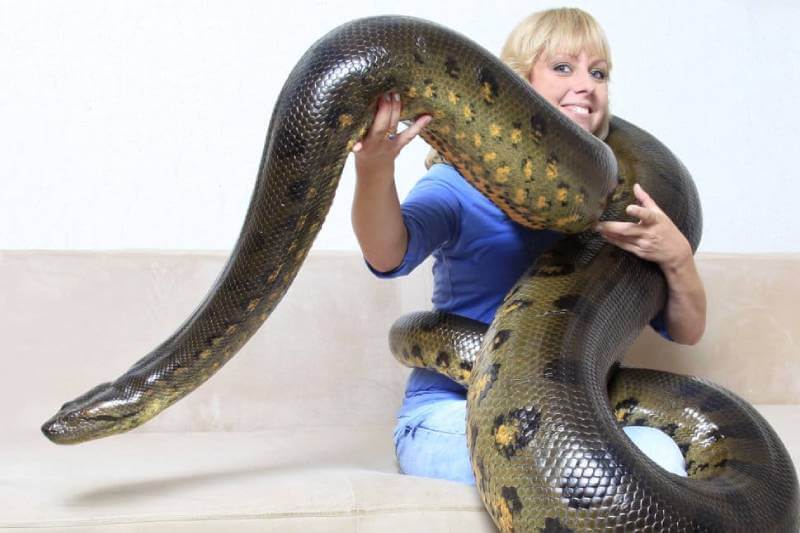Anaconda legends have captivated audiences for years. Movies often exaggerate their size and behavior. But what’s true about these legends?
Many believe anacondas are monstrous man-eaters. This misconception stems from movies and myths. In reality, anacondas are shy and elusive.
Let’s explore the real anaconda. We’ll separate fact from fiction. Discover the truth behind the anaconda legends and movies.

Anaconda legends have fascinated people for generations. These giant snakes inspire awe and fear. People often think of them as enormous man-eaters.
Movies and books have influenced this perception. They often exaggerate the anaconda’s size and danger. The famous anaconda legends mostly focus on the green anaconda.
Green anacondas are indeed large. They can reach up to 30 feet in length. They live in the Amazon rainforest of South America.
Anaconda legends grew from these facts. Their size alone makes them subjects of fascination. Many people who are not familiar with these creatures see them as monsters. In general snakes are not the most well liked reptile.
In modern culture, movies play a significant role. Films like “Anaconda” and it secuels, showcase these snakes as overpowering predators. These portrayals fuel the myths.
Pop culture loves the idea of a giant snake. The anaconda’s not well known nature makes them really misunderstood. The Amazon River and jungle settings add mystery.
Writers like Percy Fawcett contributed to anaconda legends. He reported seeing giant snakes during his explorations. His accounts helped build the anaconda’s legendary status.
This was a sensationalist tale taking advantage of misunderstandings about the Amazon Rainforest. This interpretation was full of prejudice about South America.
These legends impact how people see anacondas. They often overlook the snake’s true nature. Anacondas are crucial to the ecosystem of the Amazon basin.
Anacondas are generally shy and avoid humans. They prefer the slow-moving waters of the Amazon jungle. Despite their size, they are not aggressive toward people.
The myths also affect conservation efforts. Fear can lead to misunderstanding and harm to these animals. Educating people about the real anaconda is vital.
Anaconda legends continue to captivate the world. They are a mix of fact and fiction. The challenge is to separate the two.
To understand anacondas, we need to look beyond the legends. The green anaconda is a marvel of nature. It is the largest snake species in the American continent.
Their diet mainly includes fish and small mammals. They use their immense strength to constrict their prey. Despite their size, they are not the monsters of legend.
Anacondas are essential to their habitat. They help control the population of other species. This balance is crucial for the Amazon river basin’s health.

Movies and pop culture have shaped the anaconda’s reputation for decades. Films often portray these snakes as deadly monsters. These depictions are thrilling but far from reality.
The movie “Anaconda” is a prime example. It showcases giant snakes hunting humans. This portrayal fuels fear and fascination.
Hollywood loves the idea of a giant anaconda. The thought of a snake reaching 30 feet in length is captivating. These images are in our minds every time we hear about anacondas.
However, these portrayals are misleading. Anacondas are not aggressive toward humans. They prefer the slow-moving waters of the Amazon rainforest.
Pop culture greatly influences anaconda legends. Stories of giant snakes in the Amazon jungle excite and terrify. Books, movies, and TV shows contribute to these myths.
Explorers like Percy Fawcett added to the legends. His tales of giant anaconda sightings were sensational. These stories quickly spread, enhancing the snake’s fearsome reputation.
People often believe these exaggerated stories. They imagine anacondas as lurking dangers in every river basin. This perception is far from the truth.
The fear generated by these myths has real-life consequences. People kill anacondas out of fear. This happens even though these snakes rarely pose a threat to humans.
Anacondas play a vital role in their ecosystem. They help control the populations of other animals. Killing them disrupts this balance and harms the environment.
Education is key to changing perceptions. People need to understand the true nature of anacondas. Dispelling myths can help protect these important creatures.
Green anacondas are the most massive snakes in the world, if they reach adulthood. They can reach impressive lengths but are not the monsters depicted in movies. They are shy and elusive.
Anacondas spend much of their time in water. They are slow-moving on land but swift and powerful swimmers. Their primary diet includes fish and small mammals.
The Amazon river basin is their home. Here, they play a crucial role as a population control agent. Understanding their true nature helps debunk anaconda legends.
Anaconda legends will likely continue to captivate. Movies and pop culture will keep telling thrilling tales. However, it is important to know what is fact and what is fiction.
Educating people about the real anaconda is essential. By doing so, we can reduce unnecessary fear and harm. This allows us to appreciate these remarkable snakes for what they truly are.
The Yacumama legend is a famous tale from the Peruvian Amazon. This myth features a giant snake living in the river. It is deeply rooted in the culture of the Amazon rainforest.
The Yacumama means “Mother of the Water”.It is a giant anaconda. According to legend, this snake reaches up to 100 feet in length. It lives in the Amazon river basin. More specifically on rivers.
The legend says the Yacumama can create whirlpools. These whirlpools can swallow boats and people. The Yacumama is both feared and respected by the local people.
The Yacumama is not just a story. It is a part of the daily life of the Peruvian Amazon. People believe it protects the waters and the creatures living in them.
In the legend, the Yacumama emerges from the water to hunt. Legends say that the Yacumama is slow-moving but incredibly powerful. Many have claimed to see this giant snake.
These anaconda sightings have fueled the legend. The locals often hear tales of the Yacumama from their elders. Every generation recounts the history to the next.
However this is a more modern version of the original story. The original story was more of a myth.
The Yacumama was an even more giant snake. But its body became water and because of its size it turned into a river. It is basically the legendary origin story for the Amazon River. This is one of the most important Anaconda Legends.

Green anacondas are likely the inspiration for the Yacumama. They are the largest snakes in the world. Their behavior as semi aquatic animals, only reinforces these. The relation between anacondas and water is more than legends.
In the Amazon jungle, these snakes are often in the water. In shallows or oxbow lakes. They blend well into their surroundings. This makes them appear even more mysterious.
Anaconda legends often exaggerate the snake’s size. The Yacumama legend takes this to the extreme. It creates an image of an anaconda that is both terrifying and awe-inspiring.
The Yacumama legend plays a crucial role in the Amazonian culture. It teaches respect for the river and its inhabitants. It also instills a sense of mystery and wonder.
People living along the Amazon river basin believe in the Yacumama’s power. They avoid disturbing the waters where it may live. This shows the deep connection between the legend and daily life.
The legend also impacts how people see real anacondas. They view these snakes with a mix of fear and reverence. This can sometimes lead to misconceptions about their nature.
The Yacumama legend is a fascinating part of anaconda legends. It reflects the rich culture and beliefs of the Peruvian Amazon. By understanding this legend, we gain insight into the lives of the Amazonian people.
Real green anacondas are not as monstrous as the Yacumama. However, they are impressive creatures. The legend adds to the mystique surrounding these giant snakes.
Anaconda legends have fascinated people for centuries. Many myths surround these giant snakes. It’s time to separate fact from fiction.
Anacondas are large snakes found in South America. Green anacondas are the largest, growing up to 30 feet in length. They inhabit the Amazon rainforest and river basin.
These giant snakes are primarily aquatic. They spend most of their time in slow-moving waters. This includes rivers, swamps, and marshes.
Anacondas are ambush predators. They wait for prey to come close. Then, they strike with incredible speed. They don’t chase after its prey. They mostly remain quiet as a strategy.
Their diet includes fish, birds, and small mammals. Occasionally, they will eat larger animals like deer or capybaras. They kill their prey by constriction.
Anacondas have a unique way of hunting. They use their powerful bodies to squeeze their prey until it suffocates. This method is effective and quick.
Despite their size, anacondas are not aggressive toward humans. Most anaconda legends exaggerate their danger. In reality, they prefer to avoid human contact.
The Amazon jungle is the perfect habitat for anacondas. The dense vegetation provides cover. The abundant water sources are ideal for their lifestyle.
Anacondas play a crucial role in the ecosystem. They help control the population of other animals. This balance is essential for a healthy river basin.
These snakes are also important to the local culture. Anaconda sightings are common in folklore. Many stories feature these majestic creatures.
Many anaconda legends are based on fear and exaggeration. Movies and books often portray them as monstrous man-eaters. These depictions are far from the truth.
Green anacondas are impressive but not dangerous to humans. They are shy and reclusive. Most encounters with humans are accidental.
Anacondas are not fast movers on land. They are much more agile in water. This slow-moving nature makes them less of a threat.
Understanding the true nature of anacondas helps dispel myths. Education is key to reducing unnecessary fear. It also aids in conservation efforts.
Anacondas are fascinating and vital creatures. Their behavior and ecology are essential to the Amazon rainforest. They are not the fearsome beasts of legend.
People who work with anacondas in zoo settings or in the legal pet trait, say they can be grumpy. This differs greatly to the monstrous creature fiction created. This does not mean the anacondas are not dangerous. But they are as dangerous as a long muscle with a mouth. Keeping your distance is enough to be safe.
By learning the facts, we can appreciate their true nature. Anacondas deserve respect and protection. Their role in the ecosystem is irreplaceable. And you can maybe encounter these incredible titans, in a visit to Manu National Park.

If you got any questions, please do not hesitate to send us a message. We reply within 24 hours!
+51 900 394 399
info@biomanuexpeditions.com
reservas@biomanuexpeditions.com
